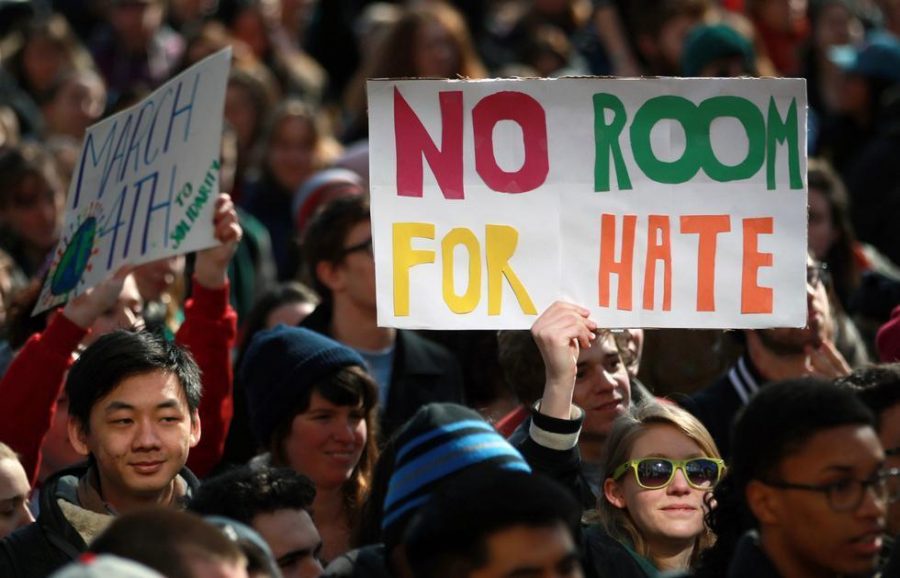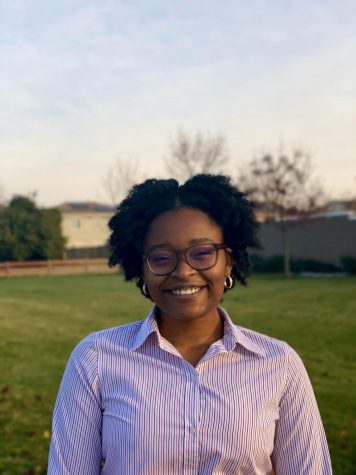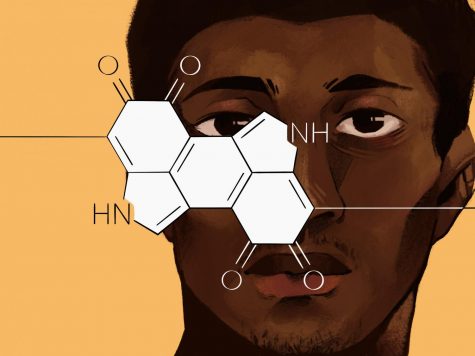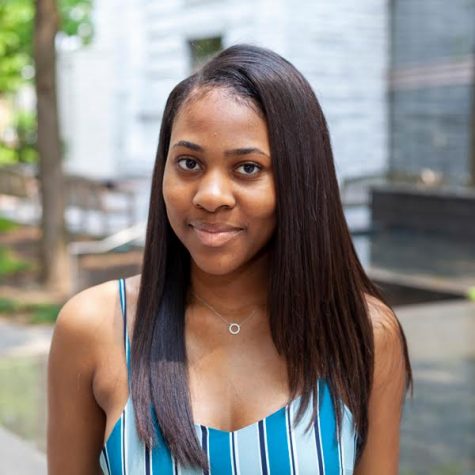Anti-hate STEM Activism in Spring 2013
It was Feb. 2013 at Oberlin College. Students and faculty had just come back to campus after Winter Term. Suddenly, mysterious, hateful posters started to pop up around campus. Islamophobia in the Science Center, racial and homophobic slurs at the Multicultural Resource Center, antisemitism in King Building.
Julie Christensen, OC ’13, was a pre-med fourth-year in spring 2013 and remembered feeling “mostly shock and the sense of, ‘Why would somebody do that?’”
Then, on March 4, students saw a robed Ku Klux Klan figure walking across South Quad before dawn. This was very upsetting to many, including Chinwe Okona, a fourth-year Neuroscience major at the time. “I just remember there being this feeling of intense fear and people feeling unsettled on campus,” Okona said. “I had friends who were like, ‘I’m not coming out of my house.’”
The College suspended class for the day and students gathered in Finney Chapel for a teach-in with the Africana Studies department and planned student-organized solidarity marches and speeches.
Student activism continued after these events. Okona and Christensen helped organize a natural sciences listening session.
“We presented grievances people had in terms of thinking about natural sciences from a more diverse perspective,” Okona said. “That was one of the few times we had dialogue with professors.”
According to Okona, this session was remarkably successful, but administrative action was desperately needed.
“Professors listened and were open to feedback, … [but] you have these conversations, you have these listening sessions — how do things actually get instituted?” Okona said.
Shortly after the incidents and subsequent gatherings, a white, male Chemistry major, Dylan Bleier, was caught putting up racist and Islamaphobic posters in the Science Center at midnight. According to an Oberlin Police Department report, Bleier told an officer, “I’m doing it as a joke to see the college overreact to it as they have with the other racial postings that have been posted on campus.” He was expelled from Oberlin and police reports detail his involvement in many of the hate speech incidents that occurred around campus.
Many students were still unsettled on campus even after Dylan Bleier was expelled.
“It felt less important … who did it than the fact that it was done,” Christensen said. “And I wouldn’t say that there was a sense of resolution after that student was suspended.”
At the time, Oberlin had numerous websites, like oberchan.com, where some users posted hate speech anonymously.
“I think, because people could be so anonymous, it felt like it was an era of ‘These are things that people are really thinking,” Okona said. “My classmates think this is dumb or don’t value intersectional, diverse perspectives — they felt comfortable enough behind these anonymous forums. It didn’t feel like it was one person.”
To many students, the physical flyers and Klansman sighting felt like an extension of the vast online presence of hatred and bigotry in the Oberlin community. The police eventually came to the conclusion that the KKK member was actually just a student wearing a blanket over their head. However, some students still felt disturbed and frightened by the recent events.
Other students, including Okona and Christensen, worked hard to create events and demand changes from the administration. The bulk of the organization for solidarity and change was led by Black students, and the March 4 programming specifically was planned by students in the Afrikan Heritage House in conjunction with members of the MRC. The burnout experienced by these students of color was tremendous.
But now, the impact of these efforts on Oberlin is largely unrecognized. It is important to recognize our biases and work towards more open communication, so that we don’t have to implement things like this only after acts of hate happen on campus.
Christensen hopes that current Oberlin students can learn something from the events in 2013.
“Keep having conversations and gathering with each other and organizing in the way that feels right and needed at the moment,” Christensen said. “Sometimes we don’t know the outcome of our efforts, but I think it’s still important to make those efforts. And if we’re still needing to ask these questions around equity, race, structural racism, then that means they’re still important and there’s room to improve.”






